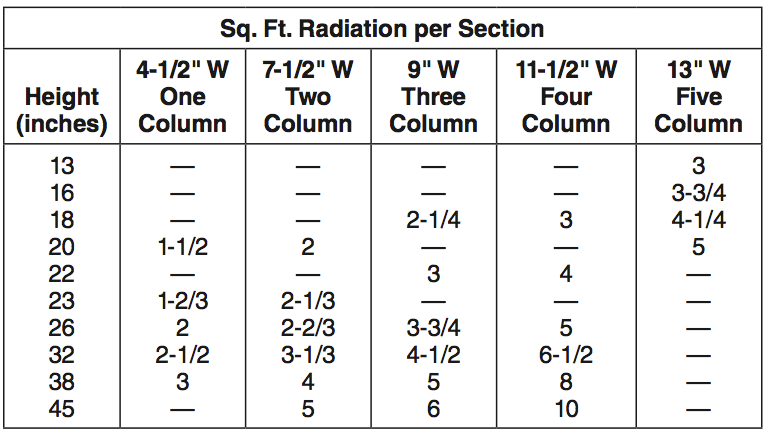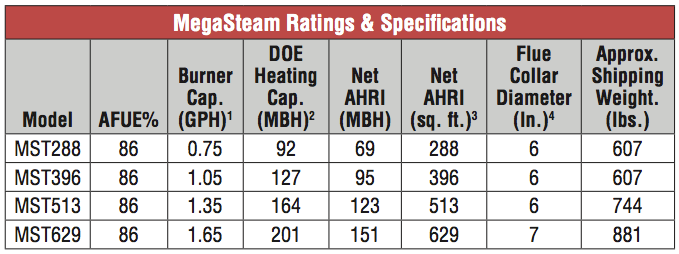By Ron Beck, U.S. Boiler Company
Last month we discussed sizing a hot water boiler with a heat loss calculation. Unlike a hot water boiler, a steam boiler is sized by determining the square foot of radiation connected to the steam system. Once that’s been determined, you can accurately select a boiler that’s large enough to heat the connected load (radiation). You only need enough steam to fill the system; any more could result in short cycling. Normally you don’t add any capacity for the system piping, but if there’s horizontal main piping in an unconditioned space, you may want to call us for suggestions.
To cover piping losses and what we call a pick-up factor, the boiler produces about 33% more steam than what’s listed in all manufacturers’ brochures. The square foot of steam listing in brochure is for connected load only. Don’t install a larger boiler than the system requires.
To calculate the square foot of radiation, first determine if the radiator is a column or tube type. Next measure the height of the radiator from the floor to the top of the radiator, count the number of columns or tubes, and count the number of sections to make up the length. Using that height and number of tubes or columns, you will use a radiator chart (below, or in your Heating Helper) to determine the square foot of steam per section of each radiator. Next multiply that number by the number of sections to get the total volume of the radiator.
The radiator pictured is a column type. Assume it is 22” tall. Looking at the chart we enter the row for a 22” tall radiator, and the column for a three column radiator. The number in the intersection of the row and column is three, which is the multiplier to determine the square foot of steam required for one section. Multiply that number times the number of sections that make up the length. This radiator would be 9 square feet of steam. When all the radiators have been calculated add the volume of all radiation together and that is the total square foot of steam required to heat the home. Next, compare this to the color brochure for the steam boiler and choose the boiler that meets the required load.
An important note on boiler sizing – all the supply piping in the basement should be insulated with a minimum of 1” of pipe insulation. A better choice would be 1-1/2” or 2” of pipe insulation. An un-insulated steam main is equal to a radiator and must be calculated and added to the above calculation. When operating a steam boiler without insulation on the main steam pipes in the basement, you’ll need a larger boiler, incurring higher operating costs. But this can also cause operating problems, like flooded boilers or water hammer, which we’ll address in a future issue.




